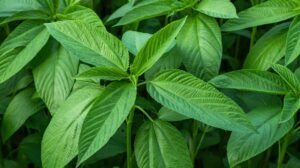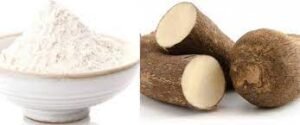
Table of Contents
Amala and Ewedu soup – How to cook the perfect Amala and Ewedu soup
Here comes the recipe to make the perfect Amala and Ewedu soup. In this article, I’ll show you how to make that perfect meal that will make your taste buds go wild.
When I was younger I saw women cook this meal with broomsticks and it gave me a bad taste, but the moment I had that awful “oh la la” meal my tummy told a different story, it was divine. First, let’s take a look at the nutritional benefits of Ewedu.
Nutritional value of Ewedu
Ewedu seeds are used as a flavoring and the Chinese are known for making herbal tea from dried leaves. Ewedu leaves are rich in beta-carotene, iron, calcium, vitamin E, and vitamin C. The plant has antioxidant activity with significant -tocopherol. This meal is also high in carbohydrates, proteins, low in saturated fats and starch.
Ewedu – Corchorus leaves

Ewedu as it is commonly known in Nigeria is also known as Corchorus (foreign) leaves, Ayoyo in Ghana, Krain Krain/Crain Crain in Sierra Leone or Jute leaves in other parts of Africa. It is a green leafy vegetable that is consumed in the cuisine of several countries. Corchorus is mainly used in South Asian, Middle Eastern, North African, and West African cuisines. It has a slimy texture, similar to okra when cooked.
Originating from the Yoruba tribe, Ewedu soup is extremely popular in the western part of Nigeria. Amala and Ewedu soup will always be one of the most popular Nigerian dishes not only among the Yoruba people but for all West African people in general.
Ewedu soup is prepared locally, kneading with a handful of brooms (Ijabe) is used to crush the Ewedu leaves into liquid and form a light, syrupy soup texture. You can also use your blender.
Amala – Nigerian dish
Amala is a Nigerian dish made from dried yam husk or cassava flour/banana flour. The Yams used to make Amala are peeled, cleaned, sliced, dried, and crushed/mixed into a flour locally called Elubo.

When dried, the color of the yam changes from white to brown when dried. This gives the amala its deep brown color. Amala is a swallow that is eaten/can be served with a variety of soups such as ẹfọ, ilá, ewédú, Ogbono or Gbegiri.
Amala is the signature swallow for Ewedu soup, this meal is unbelievably delicious. A combination of Ewedu and Amala soup gives this dish a unique taste. Here’s how to prepare the perfect Amala and Ewedu soup.
Ingredients for Amala and Ewedu
Here is a list of ingredients needed to prepare the perfect Amala and Ewedu soup.
- Yam Flour or Dry Yam Husks
- A handful of Ewedu leaves (corchorus leaves)
- Chili pepper
- Salty
- 2 teaspoons mixed crayfish
- One teaspoon of Iru (locust beans)
And there is already a pot of stew ready.
Cooking instructions
Ewedu
Step 1 – To make Ewedu soup, you need to take the vegetable from the stem, wash the Ewedu leaves 3-4 times carefully to remove sand and dirt, then mix the Ewedu leaves until dissolved.
Step 2 – Pour the mixed Ewedu leaves into a saucepan, add salt, pepper, crayfish, iru, and other flavors.
Step 3 – Stir vigorously for 2 to 3 minutes and set aside.
Amala
Step 1 – You simply beat your dry yam chaff with a mortar and pestle or you get 2 cups of yam flour.
Step 2 – Boil about 2 cups of water.
Step 3 – Once the water is boiling, pour it into a saucepan.
Step 4 – Slowly add the yam flour to the pan and stir well with a wooden toothpick, until smooth and firm.
Step 5 – Serve with the Ewedu soup and the prepared stew.
If you have both, serve it warm with a chilled bottle of Coke. This is how the perfect Amala and Ewedu soup is prepared.
Conclusion
Ewedu soup is usually prepared with edible potash (iru) and very few spices are added, you can still prepare Ewedu soup without potash. If you are making Ewedu soup for babies or pregnant women, use a small amount of flavoring.







